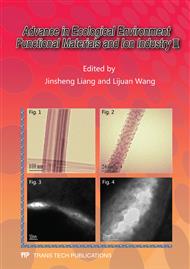p.32
p.38
p.45
p.51
p.55
p.60
p.64
p.70
p.77
Influence of Water Activated by Ceramic on Growth of Epidermal Cells of Newborn Mice
Abstract:
The effect of activated water on the growth of epidermal cells of newborn mice is studied by cell culture in vitro. To investigate the influence of activated water on the growth of cells, parameters of water are measured. Then, biological mechanism about how the water effects on cells is discussed. It shows that activated water has the promoter action to growth of cells comparing with non-activated water by detecting optical density (OD) at 570 nm with the MTT colorimetry. Statistically, the probability P, less than 0.01, is obvious. We believe that water cluster has become smaller and small water clusters are beneficial for transporting nutrients.
Info:
Periodical:
Pages:
55-59
Citation:
Online since:
January 2012
Authors:
Keywords:
Price:
Сopyright:
© 2012 Trans Tech Publications Ltd. All Rights Reserved
Share:
Citation:


